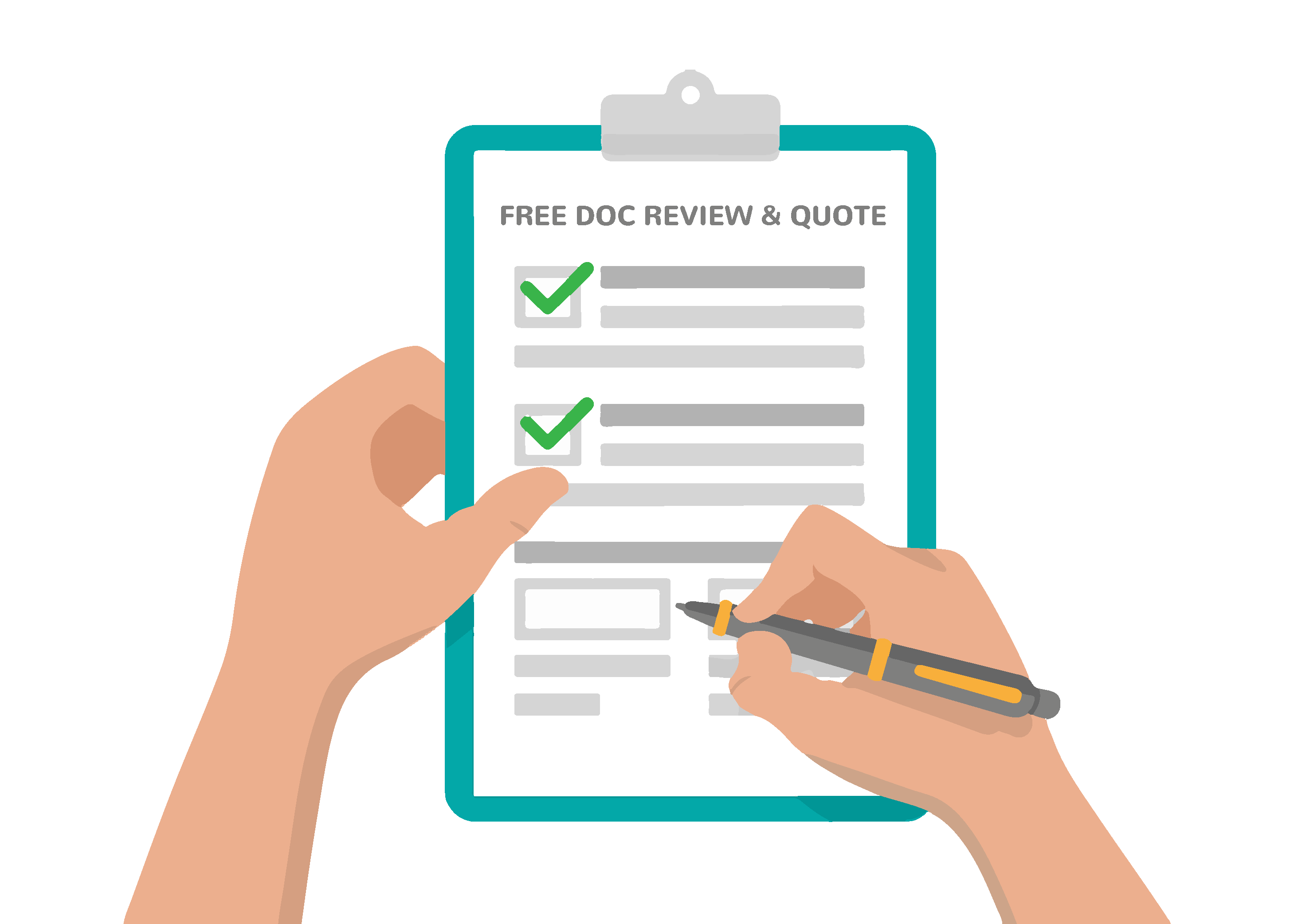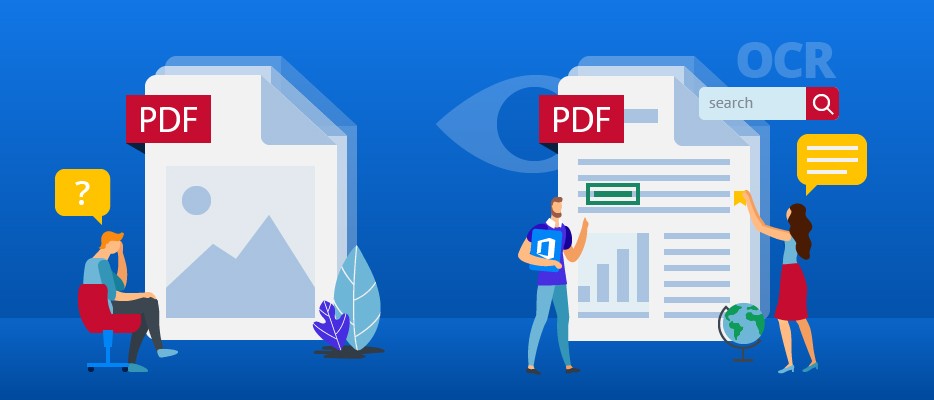How long does it take you to find how much interest your investment fund has gained? How long does it take to find the product number of your water filter replacement, or how often your smoke detector’s batteries should be replaced?
For a sighted person, finding that necessary daily information takes just a few minutes of looking through a PDF financial report or product manual. For an assistive technology user, that information might take an hour or more to find, if it’s available at all.
The lives of real people are impacted when an organization doesn’t take the time to make its digital resources, including PDFs, accessible to everyone.
Lack of Regulations
The problems caused by PDF accessibility barriers are no less real than the accessibility barriers caused by the built environment. However, digital accessibility is significantly less governed than built environment accessibility due to the lack of clear regulations.
Despite years of requests from Congress and the public, the Department of Justice still has not published specific regulations for digital accessibility. They announced they will be doing so starting in 2023, but meanwhile inaccessible websites and PDFs are still everywhere.
Top 5 PDF Accessibility Barriers for Assistive Technology Users
A study by Karlen Communications titled PDF and the User Experience lists in detail many of the most common frustrations assistive technology users have with inaccessible PDFs. The good news is that with the right tools these common challenges are easily solvable so you can make your content easily accessible to every website visitor.
1. Completely Untagged Documents
Even when an organization has prioritized digital accessibility, PDFs can often fall by the wayside. They can be difficult and time-consuming to remediate, and many remediation tools require in-depth PDF accessibility knowledge, which can push the project to the back burner if an organization doesn’t have the bandwidth or specialized staff to tackle it. Organizations may simply ignore the PDFs and leave them untagged. However, the lack of digital tags is the number one PDF accessibility barrier assistive technology users face. One user said,
“My frustrations include the predominance of PDFs created without tagging, including those from scanned documents, rendering only as images. This seems to be a default strategy for most who are untrained in creating accessible documents. I receive numerous emails with embedded PDF documents, many of which are also scanned images. These include invitations, flyers, etc. The scope of this issue spans a majority of PDF documents with which I interact.”
Another explains,
“…When there’s no tags it’s hard to figure out what’s what. Then you got words that are either split up or have errors. Like to the point you can’t figure out what it is.”
Even when PDFs are tagged, it’s often done incorrectly. Incorrectly tagged documents aren’t much more helpful than untagged PDFs. Another survey respondent shares,
“The text is either jumbled together as one large word, or reads directly across as one line when it should be in a table.”
How can it be fixed?
Make sure your PDFs are accessible by using a screen reader or a free, automated checker to see whether there are accessibility issues. Unless you’ve intentionally tagged them already, they are probably not accessible.
Remediate EVERY document by adding tags. The most efficient way to do this is to have each person who creates PDFs remediate their own documents before the PDF is published on a website, via email, or otherwise distributed.
Outsource what you can’t fix in-house. If you have a backlog of inaccessible PDFs stored on your website and don’t have enough time or manpower to remediate them all, outsource the project to a reputable team. RemDoc offers PDF remediation services. All projects are validated using both automated checkers and manual screen readers to ensure the PDFs are both compliant and usable by assistive technology.
2. Tables
The next largest PDF accessibility barrier that renders information inaccessible is untagged or incorrectly tagged tables. Without careful and correct tagging, the information in the table makes very little sense. Untagged tables are read simply as a string of words, without regard for column and row headers. Without the context of the rows and columns, the information is incoherent and the meaning is lost.
One assistive technology user said,
“My biggest pain point is the lack of organization of tables. Quite frankly, table rendering is an ugly mess! I would say that a majority of PDFs I need to read have such tables like in financial statements.”
How can it be fixed?
All row and column headings must be tagged as headings. You can mark all blank cells as “blank” so assistive technology users know they’re not missing information that should be there. Headings that span across two or more columns will need to be merged into one. Table summaries are required with additional information about the number of columns and rows, and any merged cells. RemDoc can make table remediation easy for you.
3. Reading Order
Another major PDF accessibility barrier is reading order. Even if some tags do exist in the document, the information may still be unusable without proper reading order. A respondent to the PDF and User Experience Survey mentions,
“Many PDFs come from the publisher without tags and the automatic tagging done by Adobe Reader doesn’t follow a logical reading order.”
Unless otherwise specified, assistive technology reads content from left to right, top to bottom across the page. That makes sense for pages with simple paragraphs of text, but causes problems for documents with columns or where other elements such as images or tables are interspersed with text. For example, a magazine page organized in 3 columns with a pop-out of quoted text and an image would read straight across the columns, reading the top lines of each column before moving onto the second line of each, etc. The images could be read anywhere, without regard to how they apply to the rest of the content.
How can it be fixed?
In order to manipulate the reading order using Adobe Acrobat, the tag tree must be accessed and elements moved manually within the tag tree. It can be incredibly difficult and time-consuming to both find the out of order elements are and then relocate them within the complicated tag tree structure. Let us at RemDoc ensure that the reading order of your PDF is properly set.
4. OCR Problems
Optical Character Recognition (OCR) is most commonly used for PDFs that were scanned from a hard copy (as opposed to those created from a digital file). OCR causes a number of problems among assistive technology users. Scanned files show up as images, and OCR technology attempts to convert the image of text into actual text. Without OCR, assistive technology only recognizes the scanned document as an image, even if it includes text.
Because legacy documents are often scanned and stored as PDFs, this issue is quite common, and often there are hundreds if not thousands of scanned PDFs in an organization’s digital archives. Many assistive technology users commented that one of their biggest PDF accessibility frustrations with Adobe involves OCR. One user says,
“When the document is scanned, no decent OCR technique is available to extract the text, an external tool needs to be used for this.”
How can it be fixed?
Adobe Acrobat can OCR a scanned document in its entirety. Keep in mind that while the Adobe Acrobat OCR feature is very helpful and easy to use, it will depend on the quality of the scanned document. If the PDF is of a barely-legible napkin scribble, even the best OCR engine will struggle to identify the text accurately. For OCR errors, the OCR’d text can be corrected manually by RemDoc.
5. No Alt Text
Students are particularly impacted when images within PDFs of textbooks and other learning materials are not tagged and described with alt text. While there is some AI technology available to “guess” what an image looks like, it often cannot describe the image to an assistive technology user correctly in terms of its meaning in relation to the content. AI technology might be able to say there is a pie chart, but not the data it depicts. One user describes,
“Also no alternative text descriptions of important graphics in text books (i.e. graphs, tables, pie charts, bar charts.) are provided by the publisher or the Adobe. This is a great setback for visually impaired students taking Economics, Accounting, Math, and similar sciences.”
How can it be fixed?
When writing alt text, always keep in mind that “understandable” is one of the pillars of WCAG philosophy. Text alternatives should be concise, accurate, and relevant. Read the text surrounding an included image to see how much additional information is actually conveyed by the image versus already present in the text. The relevance of the image within the document informs how the alt text is written. RemDoc can make adding Alt Text to images easy.
Accessibility Relieves Frustration
When organizations don’t take the time to make their own PDFs accessible, they are left to try to remediate the finished document themselves with tools that weren’t designed to make documents accessible. An assistive technology user from the Karlen study says,
“The PDF Autotag feature in Acrobat is lackluster at best. It doesn’t conform to any standards that I know of, just randomly assigning stuff as it goes.”
The best way to provide a frustration-free experience for all your users, promote a positive view of your organization, and reduce your risk of digital accessibility lawsuits is to make all of your PDFs accessible from the beginning.
Choose a straightforward PDF Remediation Service that all your content creators can use to make their documents accessible. When existing PDFs are not accessible and you don’t have time or resources to make them so, get help by outsourcing the project to experienced PDF accessibility professionals. That way, no matter who accesses your documents, they are accessible and ready to use. Contact RemDoc to find out how we can help you achieve PDF accessibility.






